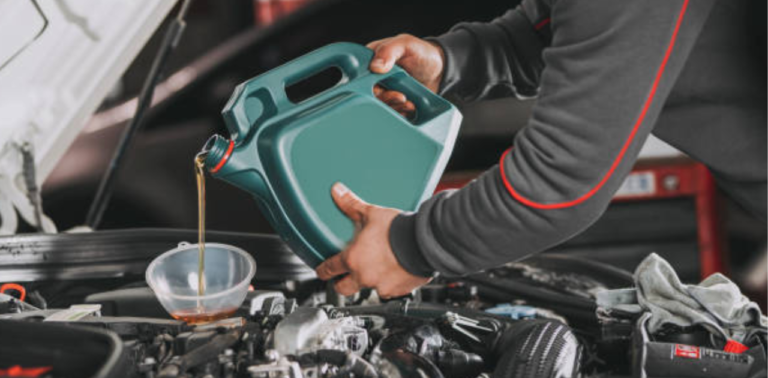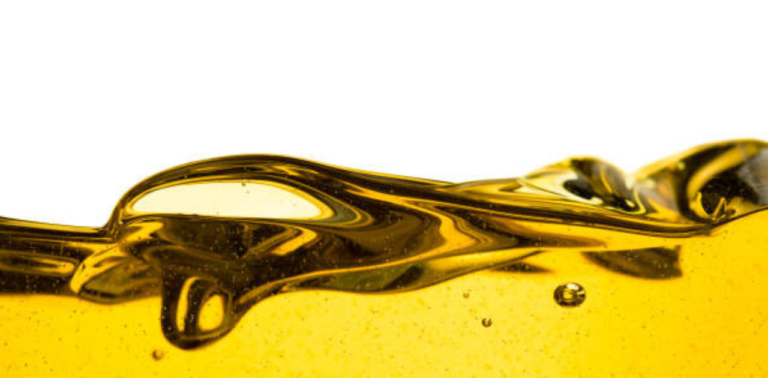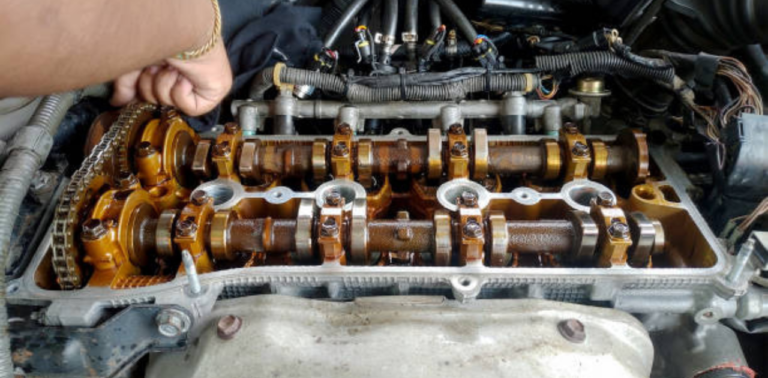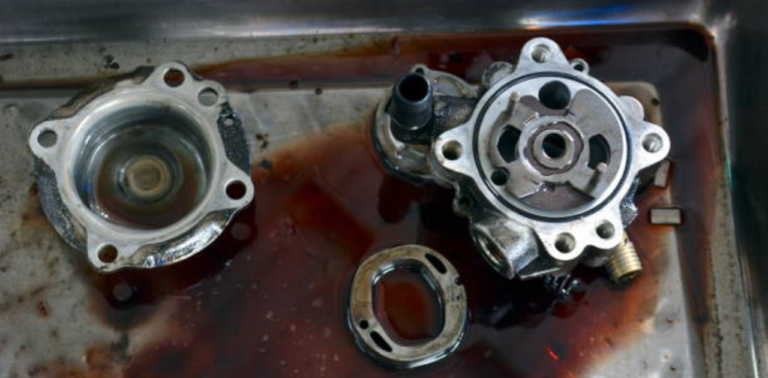How Does an Oil Filter Work? A Beginner’s Guide
If you’re a car or motorcycle owner, understanding how an oil filter works is essential for maintaining your vehicle’s health and longevity. The oil filter work plays a crucial role in ensuring your engine stays clean and operates efficiently. In this beginner’s guide, we’ll delve into the inner workings of an oil filter, how to change it, its function in a bike, and the different types of oil filters available in the market.
How Does Oil Filter Work?
An oil filter is like the kidney of your vehicle’s engine, purifying the oil and preventing contaminants from circulating and causing damage. It primarily consists of a casing that holds the filtration material. As the engine oil circulates through the filter, the filtration material captures various impurities such as dirt, metal particles, and sludge.

Filtering Mechanism:
Mechanical Filtration: This is the primary mechanism used in oil filter work. It involves a fibrous material, typically made of cellulose, that traps larger particles as the oil flows through.
Magnetic Filtration: Some oil filters have magnets that attract and retain ferrous (iron-based) particles from the oil.
High-Efficiency Filters: These utilize synthetic materials to capture even smaller particles, providing more effective filtration.
How to Change an Oil Filter?
Changing an oil filter is a relatively simple process that should be part of regular vehicle maintenance. Here’s a step-by-step guide to help you through the process:
Gather the Necessary Tools and Equipment:
· New oil filter
· Oil filter wrench
· Oil pan or container
· Rags or paper towels
Locate the Oil Filter:
· It is typically located near the engine block. Refer to your vehicle’s manual if you’re unsure.
Prepare the Vehicle:
· Ensure the engine is cool but not entirely cold to ease the removal of the old filter.
Drain the Oil:
· Place the oil pan beneath the oil drain plug.
· Loosen the plug and drain the oil into the pan.
Remove the Old Oil Filter:
· Use the oil filter wrench to unscrew the old filter in a counterclockwise direction.
Clean the Mounting Surface:
· Wipe the mounting surface clean to ensure a proper seal for the new oil filter.
Install the New Oil Filter:
· Apply a thin layer of oil on the gasket of the new filter.
· Screw it on clockwise until snug, then tighten it by another 3/4 to 1 turn.
Refill with Oil:
· Refer to your vehicle’s manual for the correct type and amount of oil to add.
Check for Leaks:
· Start the engine, allow it to run for a few minutes, and check for any oil leaks around the filter.

What Is the Function of an Oil Filter in a Bike?
In a motorcycle, the oil filter serves the same essential purpose as in a car: to keep the engine oil clean and free from harmful particles. However, due to the compact size of motorcycle engines, the importance of efficient oil filtration becomes even more critical.
A bike’s oil filter primarily works to:
·
Remove Contaminants: The filter traps impurities that could potentially harm the engine, ensuring a longer life for your bike.
Maintain Engine Performance: By keeping the oil clean, the filter enables the engine to run smoothly and at peak performance levels.
Enhance Fuel Efficiency: A clean engine works more efficiently, contributing to better fuel consumption.
How Different Are Oil Filters?
Oil filters come in various types, each with distinct characteristics and capabilities. The main differences lie in the materials used for filtration and their filtration efficiency. Let’s explore the different types:
Mechanical Oil Filters:
· Most common and affordable.
· Utilize fibrous materials (cellulose) to trap contaminants.
Synthetic Oil Filters:
· Made of synthetic fibers for higher filtration efficiency.
· Can trap smaller particles, providing better engine protection.
Cartridge Oil Filters:
· Replaceable filter elements.
· Environmentally friendly due to less waste.
Magnetic Oil Filters:
· Contain magnets to attract and retain ferrous particles.
· Especially useful for capturing metal debris.
Centrifugal Oil Filters:
· Use centrifugal force to push contaminants to the outer edge, making it easier to remove them.
Understanding the differences between these oil filters can help you choose the best one for your vehicle and ensure optimal engine performance.

Common Types of Oil Filters
Oil filters are a critical component of a vehicle’s engine, responsible for keeping the engine oil free of contaminants that can potentially damage the engine. They come in various types, each with its unique features and filtration mechanisms. Here are the common types of oil filters:
1. Mechanical Oil Filters:
Mechanical oil filters are the most common and traditional type. They use a fibrous material, typically made of cellulose, to filter out contaminants. As engine oil passes through the filter, the fibrous material traps particles such as dirt, debris, and metal fragments, preventing them from circulating in the engine.
2. Synthetic Oil Filters:
Synthetic oil filters are an advanced version of mechanical filters. They use synthetic fibers for the filtration material, providing a higher level of filtration efficiency compared to mechanical filters. Synthetic filters can capture smaller particles, ensuring better engine protection and longer filter life.
3. Cartridge Oil Filters:
Cartridge oil filters are becoming increasingly popular. Instead of a self-contained metal canister, they use a replaceable filter element, reducing waste and making them more environmentally friendly. When it’s time for an oil change, you only need to replace the inner filter cartridge, not the entire housing.
4. Magnetic Oil Filters:
Magnetic oil filters utilize magnets within the filter to attract and retain ferrous (iron-based) particles present in the engine oil. These filters are particularly effective in capturing metal debris and preventing it from circulating in the engine, which is crucial for maintaining engine health.
5. Centrifugal Oil Filters:
Centrifugal oil filters operate by using the centrifugal force generated by the engine’s spinning motion. As the oil passes through the filter, the force pushes contaminants, such as dirt and metal particles, to the outer edges of the filter housing. This makes it easier to remove the trapped impurities during an oil change.
Major Components of an Oil Filter
An oil filter is a crucial part of any internal combustion engine, responsible for keeping the engine oil clean and free of harmful contaminants. Understanding its major components is essential in comprehending how it effectively filters the oil. Here are the main components of an oil filter:
1. Outer Shell:
The outer shell is the external casing of the oil filter, typically made of metal or steel. Its primary function is to protect the internal components and provide structural integrity to the filter.
2. Gasket:
The gasket is a ring-shaped component made of rubber or similar materials, situated on the top or bottom of the oil filter. It ensures a tight and leak-free seal between the oil filter and the engine block, preventing oil leakage.
3. Filtering Media:
The filtering media is the core element of the oil filter responsible for trapping contaminants present in the engine oil. It can be made of various materials such as cellulose, synthetic fibers, or a blend of both. The filtering media’s design and composition determine the filtration efficiency of the oil filter.
4. Anti-Drain Back Valve:
The anti-drain back valve is a small rubber flap or valve located within the oil filter. Its purpose is to prevent oil from draining out of the filter when the engine is turned off. This helps maintain oil pressure and ensures quicker lubrication when the engine starts.
5. Relief Valve:
The relief valve, also known as a bypass valve, is a safety feature in the oil filter. If the oil becomes too thick or the filter becomes clogged, the relief valve opens to allow unfiltered oil to bypass the filter and circulate directly through the engine. This prevents engine damage due to inadequate lubrication.
6. Center Steel Tube:
The center steel tube runs through the center of the oil filter and provides structural support. It also acts as a passage for the filtered oil to flow through and return to the engine.
7. End Discs:
End discs are circular plates attached to both ends of the oil filter, sealing the filtering media and holding it in place. They prevent unfiltered oil from bypassing the filter.
8. Check Valve:
Some oil filters incorporate a check valve to maintain a constant supply of oil to the engine. It prevents the oil from draining back into the oil pan when the engine is turned off, ensuring immediate oil circulation upon starting.

Conclusion,
An oil filter is a vital component of your vehicle’s engine, working tirelessly to keep the oil clean and your engine running smoothly. Regularly changing the oil filter and using the appropriate type for your vehicle are key steps in maintaining the health and longevity of your engine. Always refer to your vehicle’s manual for specific recommendations regarding oil and oil filter changes.
Frequently Asked Questions
What way does oil flow through an oil filter?
Oil normally flows in an outward direction through canister-type filters. This indicates that the oil passes from the outer core to the inner core through the cylindrical filter material.
What are the 2 types of oil filters?
Primary oil filters and secondary oil filters are the two main categories of automotive oil filters.
Primary oil filters purify and eliminate contaminants from the engine oil.
Conversely, impurities that the main oil filters were unable to remove are removed by secondary oil filters.
How do oil filters get dirty?
The crucial task of maintaining clean, debris-free engine oil is carried out by your car’s oil filter. The filter eventually fills with debris and contaminants over time, decreasing its efficiency and leaving the oil soiled.






